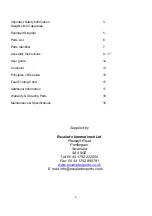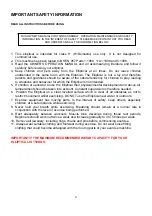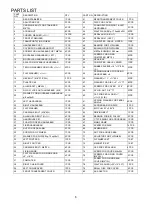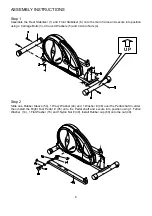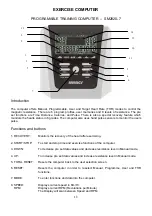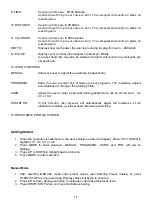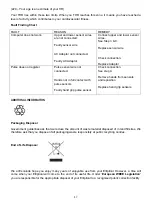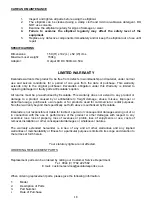
16
Warm-up
: Any workout needs to begin with a good warm-up for at least 5-10 minutes. The warm-up
consists of whole body, low intensity rhythmic movement, stretching and limbering exercises. A common
way to warm your body is by jogging on the spot. Start by moving your legs and then your arms until you
get your whole body moving.
The purpose of the warm-up is to increase your muscle and core body temperatures. Warm muscles are
more elastic and, therefore, less susceptible to injury. Also, warm muscles burn fat more readily than
cold muscles. In addition to increasing your body temperature, you are also raising your resting heart
rate in preparation for more vigorous exercise. This should then be followed by a series of stretches.
Workout
: strength straining or circuit training.
Cool-down:
Never suddenly quit while exercising, instead, gradually decrease your intensity and then
move into whole body stretching with movements of decreased intensity, until your heart rate comes
down a little. The rhythmic movements of a cool-down will help to remove waste products that build up in
your muscles while you exercise. A good cool-down can greatly reduce muscle cramping and post
exercise muscle pain.
Aerobic Training
Aerobic training is exercise during which the oxygen supply is sufficient to meet the oxygen demand of
working muscles, with the objective being the ability to continue the exercise for prolonged periods of
time (20 minutes or more). Aerobic exercises are those which utilize large muscle groups in a rhythmical
and continuous nature. Running, swimming, stair climbing, cycling, brisk walking, etc. are all examples of
aerobic exercise.
It is recommended that the average healthy adult perform aerobic exercise for a minimum of 20 to 30
minutes, three times per week, at an intensity that elevates the heart rate to within the Target Heart Rate
Zone. The Target Heart Rate Zone is between 70% and 85% of the Age-Predicted Maximum Heart Rate.
As a general rule, the Age-Predicted Maximum Heart is approximately 220 beats per minute minus your
age.
Strength Training
Strength training involves the ability of a muscle or muscle group to generate force against resistance. It
is recommended that the average healthy adult perform a minimum of one set of 8-20 repetitions to near
fatigue for 12 major muscle groups (Quadriceps, Hamstrings, Calves, Chest, Back/Lats, Upper
Back/Traps, Mid Back/Lats, Lower Back, Shoulders, Triceps, Biceps and Abdominals).Strength training
should be performed a minimum of two times per week. Rest a minimum of 48 hours, but no more than
96 hours between training sessions that use the same muscles.
Circuit Training
Circuit training is a time effective method of exercise, during which the individual performs a series of
specified muscle group exercises with as little rest as possible between each muscle group. Like
strength training, circuit training should only be done every other day to give your muscles a rest.
Target Heart Rate
Your Target Heart Rate is a useful way of pacing yourself when you exercise. It ensures your activity is
not too high or too low. You can also use your THR to evaluate your fitness level.
A simple method of calculating you THR is:
THR = (220 – your age) x 50%
Lower Limit
THR = (220 – your age) x 75%
Upper Limit
Содержание E7000D
Страница 5: ...EXPLODED DIAGRAM 5 ...

